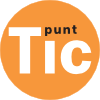The Commission has presented three strategic objectives connectivity by 2025 should serve to focus the digital future we want:
- All engines socioeconomic important as schools, universities, research centers, the nodes of transport, all public service providers (such as hospitals and public administrations) and enterprises that rely on digital technologies should be access to an extremely high speed connectivity of Gigabits (that allows users to download / upload one gigabit of data per second).
- All European households, rural or urban, should have access to connectivity that offers a download speed of at least 100 Mbps to Gbps improved.
- All urban areas, as well as major roads and railways, must have uninterrupted coverage 5G, the fifth generation of wireless communication systems. As intermediate target, the 5G has to be commercially available in at least one of the main cities in each Member State of the EU in 2020.
These objectives can only be achieved with substantial investments. The Commission therefore proposes a new European Code of electronic communications, with simplified rules and aimed to make the future more attractive to all companies investing in new infrastructure of high quality anywhere in the EU, both in local and cross-border. the investments promoted by the new framework for GDP could pose an additional EUR 910 000 million and create 1.3 million new jobs over the next ten years (of 2025). in addition of the Code, the Commission also presented an action plan for the development of 5G across the EU from 2018. they could thus created two million jobs in the EU.
Another key initiative of the connectivity package presented today, WiFi4EU , aims to help European Communities to provide free WiFi hotspots all citizens. The Commission has proposed a new initiative to give all interested local authorities the possibility of offer free wiFi to all citizens, for example in and around public buildings, health centers, parks and squares. With an initial budget of EUR 120 million, this new public system could provide connectivity in thousands of public spaces, generating between 40 and 50 million wireless connections a day. a minimum of 6000 to 8000 local communities benefit from this new project by 2020.



